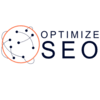Where things change so quickly, it might be hard to stand out amidst the digital clutter, which is a formidable challenge. Companies that want to do well in today’s very competitive e-commerce market must know how to do Search Engine Optimization (SEO). Product pages must be improved for search engine optimization (SEO). Getting more attention, sales, and the right people is essential. This blog talks in great depth about Product Page SEO. It looks at all of its elements and gives you helpful advice on improving your e-commerce efforts and having more success.
Navigating the Terrain of Product Page SEO:
Product Page SEO is a type of optimization that can help you improve each product description on an e-commerce site. Product Page SEO doesn’t try to improve the layout of the whole website like most SEO methods do. Instead, it focuses on improving only a few product pages to show up higher in search results. Now, let’s look at the most critical elements of an effective SEO for e-commerce product pages:
1. Meticulous Keyword Research:
Any SEO strategy that wants to work needs to do a lot of research on topics. Find out which words and sentences are most important for your business and the people you want to reach first. Many tools, like Google Term Planner, SEMrush, and Ahrefs, can help you find keyword ideas that will make you money. You need to find a good balance between how popular the search term is and how much competition there is for it. Discover valuable terms related to what people want and how likely they are to buy.
2. Precision On-Page Optimization:
For the best results, use on-page optimization to improve the different elements of your product pages. Title tags and meta descriptions should interest search engines and people who might buy. To improve the user experience, organize the content with clear headers and short, helpful product descriptions using the correct language.
3. Elevating Content Quality:
The information on the Product Page must be correct for SEO. If you want to teach and draw potential buyers, you should include more than just basic features and specs in your product descriptions. Add detailed, valid text about how each is better for the product pages. To connect with your audience more deeply, stress the benefits, real-world uses, and stories that directly meet their needs.
4. Optimal Image Optimization:
The way the site looks is significant for e-commerce sites to change how people use them and make more sales. To improve the quality of your product pictures, provide more information on the file names and alt tags. You should ensure that the file size and picture quality work together to load quickly on all devices. Making sure that shots are optimized for users and search engines can help people find and be interested in your product pages.
5. Seamless User Experience (UX):
The most crucial element of your Product Page SEO plan is adding features that improve the user experience (UX). To make the website more accessible for people on all devices, speed up page loads, make it easier to browse, and ensure phones can access it. Make the layout simple, visually appealing, and easy to use. Use strong calls to action (CTAs) to guide users through the buying process and earn their trust and confidence.
6. Strategic Internal Linking:
Adding internal links with care will help you connect product information to pages about those products. If you link product lists to blog posts, FAQs, and topic pages related to the products, search engine crawlers will find your site more accessible. Users will also enjoy reading more because of this. The complicated web of data makes things stand out more and makes your online store look more substantial and trustworthy.
7. Harnessing the Power of Customer Feedback:
Use the power of customer reviews and scores to make people more likely to trust your product pages. Use and stress genuine customer reviews as social proof to make them seem more trustworthy. Customers are more likely to buy from you if you have good reviews. Reviews also give you applicable user-generated content that helps your SEO strategy.
8. Implementing Schema Markup:
Organized data markup, such as Schema.org, can help you tell search engines more about the things you list. You can get rich snippets in search engine results by adding schema markup to this page. This will help people find your pages and make them more likely to be clicked on. Use schema code to draw attention to a product’s price, availability, and qualities that are important to you. People who search will see this vital information right away.
Benefits of product page SEO:
As you consider product page SEO best practices, use strong tracking tools like Google Tracking and Google Search Console. To see how well your product page SEO is working, keep an eye on your site’s traffic, ranks, return rates, and sales rates. Use what you learn from the data to keep improving your plan, and it will help you be ready to change your plan when search engines or customers’ tastes change.
Conclusion:
Strong Product Page SEO tactics will help e-commerce become more well-known and grow. More sales, better search engine rankings, and more approved leads can come from companies that carefully improve on-page features, improve the user experience, and use structured data code. Always be on top of how SEO changes if you want to beat the other people in the digital market. Optimize SEO works hard to give clients the best results, which helps them stand out online and do well in the fast-paced world of e-commerce.








